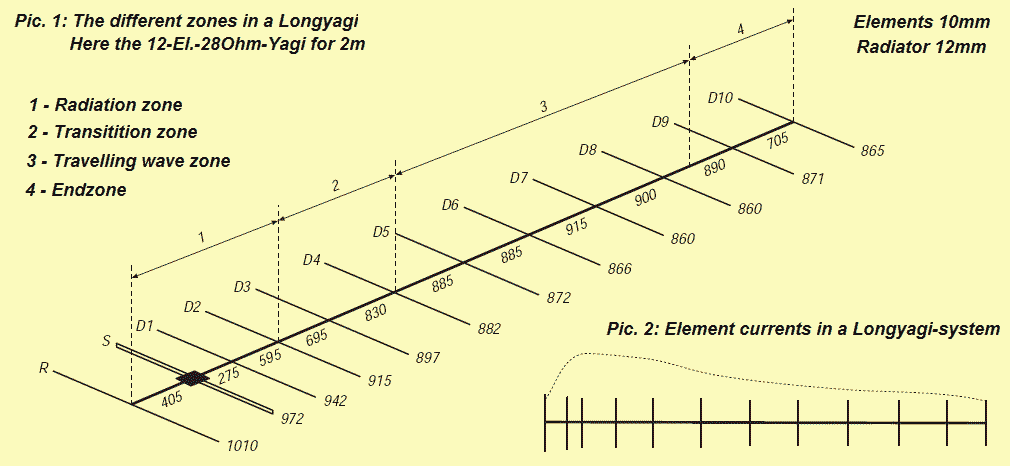Dl6wu Yagi Design Program
Book Review: The ARRL Antenna Designer’s Notebook by Brian Cake, KF2YN
January 27, 2010 | Amateur Radio | By: Mark VandeWettering
The other day I was in HRO and scanning for some reading material for the long weekend. I ran across Brian Cake’s new book, The ARRL Antenna Designer’s Notebook. A brief skim of it showed that it actually covered a couple of interesting antenna types which I had never heard of: the Box Kite Yagi and the Twin C antenna and some brief forays into other topics, including ground planes and small transmitting loops.
Wokatenna Design; Yagi Uda Antenna Designer (NBS Tech. Note 688) Yagi Uda Antenna Designer (Rothammel/DL6WU). Must-Have favourites (Windows) CodeVisionAVR Tools. Snippets. YagiudaantennaDL6WU.php 14898 Bytes 07:55:47 Yagi Uda Antenna Calculator. About DL6WU Long boom Yagi design tools The resource is currently listed in dxzone.com in a single category. The main category is Antenna analysis software that is about software,antenna analysis software, for ham radio operators and hams. This link is listed in our web site directory since Sunday Feb 1 2009, and till today 'DL6WU Long boom Yagi design tools' has been followed for a total of. DL6WU Yagi for 2320MHz; Programs to design 'classic' DL6WU Yagis As close as possible to DL6WU's original designs and intentions: Extremely Long Yagi Antennas, VHF Communications, 3/82; Zelf Ontwerpen en Bouwen van VHF en UHF Antennes (with PA0MS), VERON; Supplemented by direct information from DL6WU. Includes element mounting corrections.
About half the book is dedicated to the Box Kite Yagi, which are basically a collection of Yagi antennas which are carefully designed to optimize gain relative to previous state of the art Yagi antennas. For instance, a six element 2m Boxkite has a boom length of approximately 85 inches, and has a gain of approximately 14.6dBi. If I try to make a 144Mhz Yagi using DL6WU’s classic long Yagi design and with similar gain, I end up with a boom 427 inches long (almost five times as long). I frankly am not experienced enough at antenna design to understand the tradeoffs involved here, or whether there (say) the box kite is more sensitive to fabrication errors, but reducing the overall boom length to such a dramatic degree is very interesting. He also has designs for interesting dual band designs, such as a small 6m/2m yagi that has around a 7 foot boom. Very nice, and thought provoking. I’m wondering whether an antenna like this aimed toward the moon rise/set positions would enable me to receive JT65 EME transmissions. Very neat.
I’m also quite interested in the “C-pole” antenna design. It’s a short vertical antenna which has very good low angle takeoff, and requires no radial system. There was an article about them in QST a while back, but a lot more details in the book.
Some of the more thought provoking antenna design notes I’ve seen in a while. I am glad I picked it up.
Comment from Elwood Downey
Time 1/28/2010 at 1:41 pm
Brian’s original article about the C pole can be accessed by subscribers to QST here: http://p1k.arrl.org/cgi-bin/topdf.cgi?id=105127&pub=qst

Comment from Brian Cake
Time 2/2/2010 at 10:54 am
Mark,
Dl6wu Yagi Design Program Download
Very nice review of my book. Thank you. I’m glad you enjoyed some of the contents. You give me too much credit for the performance of the 2m boxkite though…14.6 dBi from a DL6WU yagi requires a boomlength of 210 inches, not 427 :-). The DL6WU design website gives the gain in dBd, not dBi, so 14.6dBd is actually 16.74 dBi.
Still, almost a factor of 3 in boom length is nothing to sniff at! I am also a telescope man. I have the mirrors ready for an off-axis reflector and now that I’m done with the book I might just have the time to build it….its only been 5 years!!
Thanks again and 73
Vk5dj's Yagi Calculator
Brian KF2YN